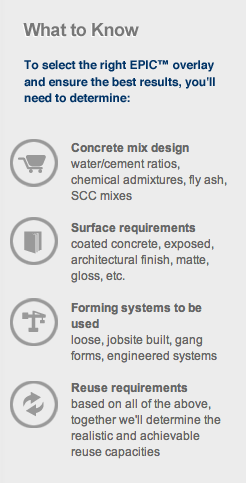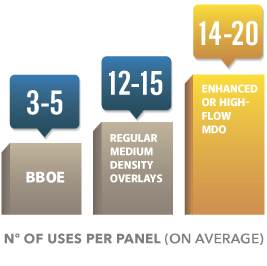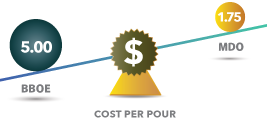Are there any advantages to using Kraft (brown) base paper as opposed to bleached Kraft base paper for concrete form overlays?
Yes, there are two key advantages to the Kraft paper forms: lower costs and lower environmental impacts.
A peer-reviewed study looked at the lifecycle impacts of manufacturing 1,250 tons of natural Kraft paper compared to making the same amount of bleached paper. Manufacturing bleached paper would use almost 800 tons more of wood from approximately 5,800 more trees than the Kraft paper slotseys.com would require.
The additional energy used to make the bleached paper instead of Kraft paper would supply the energy needs of 59 American homes for one year (38 million Btus vs. 33 million.) The total energy required to make the bleached paper would also create over a half a million tons more carbon dioxide than the CO2 resulting from natural Kraft paper manufacturing.
Bleached paper manufacturing also creates much more wastewater than kraft paper –about 15 million gallons more, or enough to fill 23 swimming pools.
In addition, the cost of titanium dioxide, used in the bleaching process, is rising. And according to a report from Dow Chemical, the demand for titanium dioxide should remain strong through 2012. (See http://in.reuters.com/article/2012/07/10/us-dupont-idINBRE86913L20120710
So on both cost and environmental impact, Kraft paper is the better choice. That’s why Arclin uses natural Kraft base paper for all its Medium Density Overlay (MDO) panels. High Density Overlays (HDOs) are available with either bleach Kraft or natural Kraft base papers.


 When it comes to choosing the right concrete forming panel for the job, there is one point that builders need to be very aware of, says Olympic Panel’s Hal Studer:
When it comes to choosing the right concrete forming panel for the job, there is one point that builders need to be very aware of, says Olympic Panel’s Hal Studer:
 To create the type of high-strength, fast-set concrete required by many new high-tech buildings, Studer says, reducing the amount of water in the mix is also critical. “When you reduce the amount of water in concrete mix, you increase the strength, at least up to a certain point.”
To create the type of high-strength, fast-set concrete required by many new high-tech buildings, Studer says, reducing the amount of water in the mix is also critical. “When you reduce the amount of water in concrete mix, you increase the strength, at least up to a certain point.”